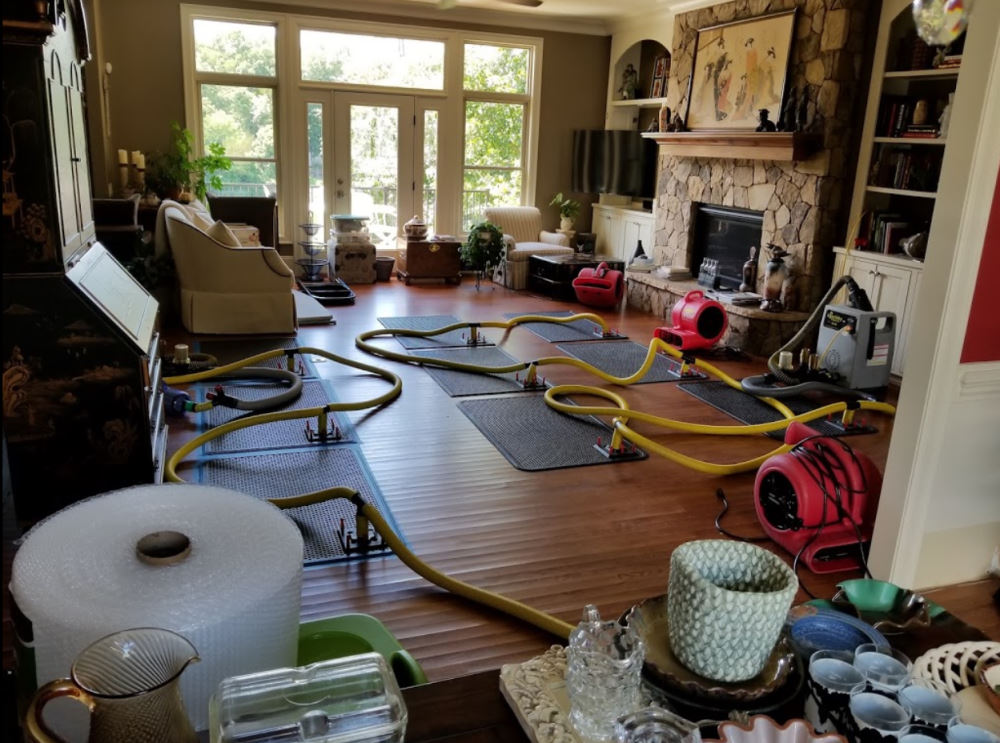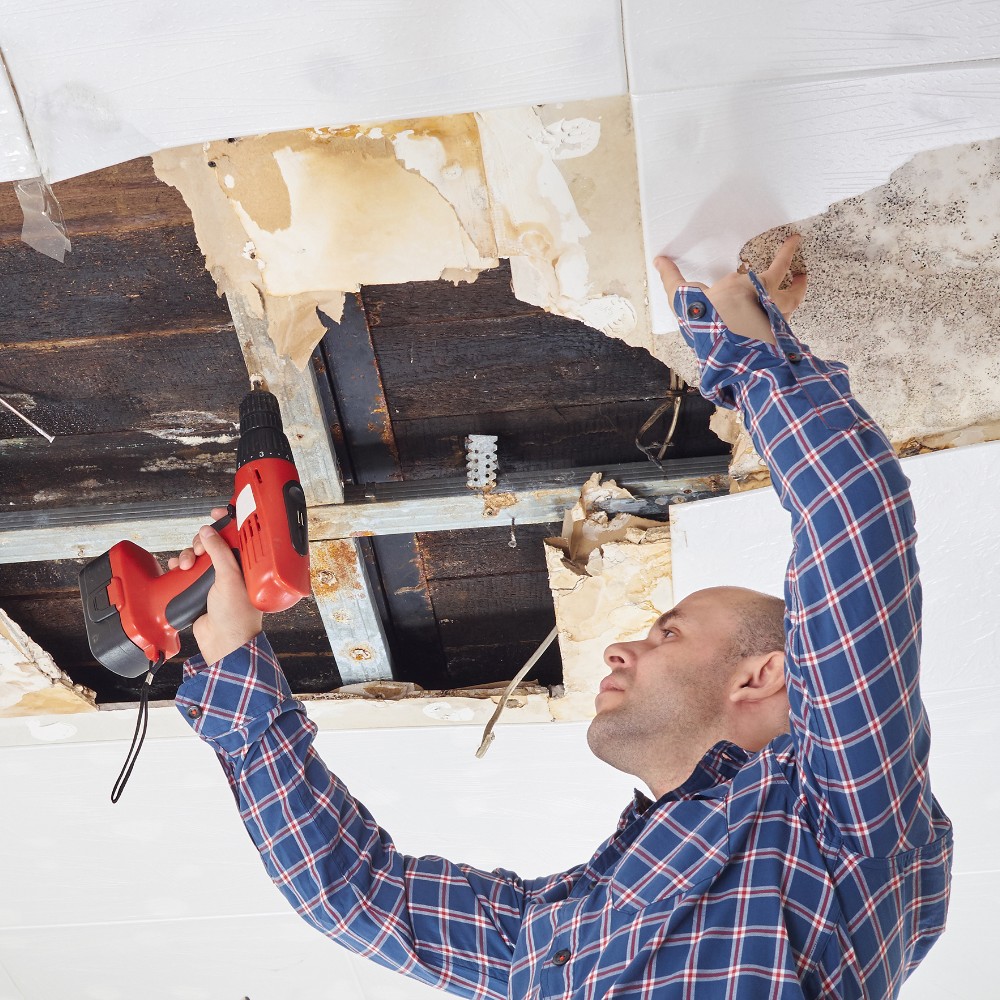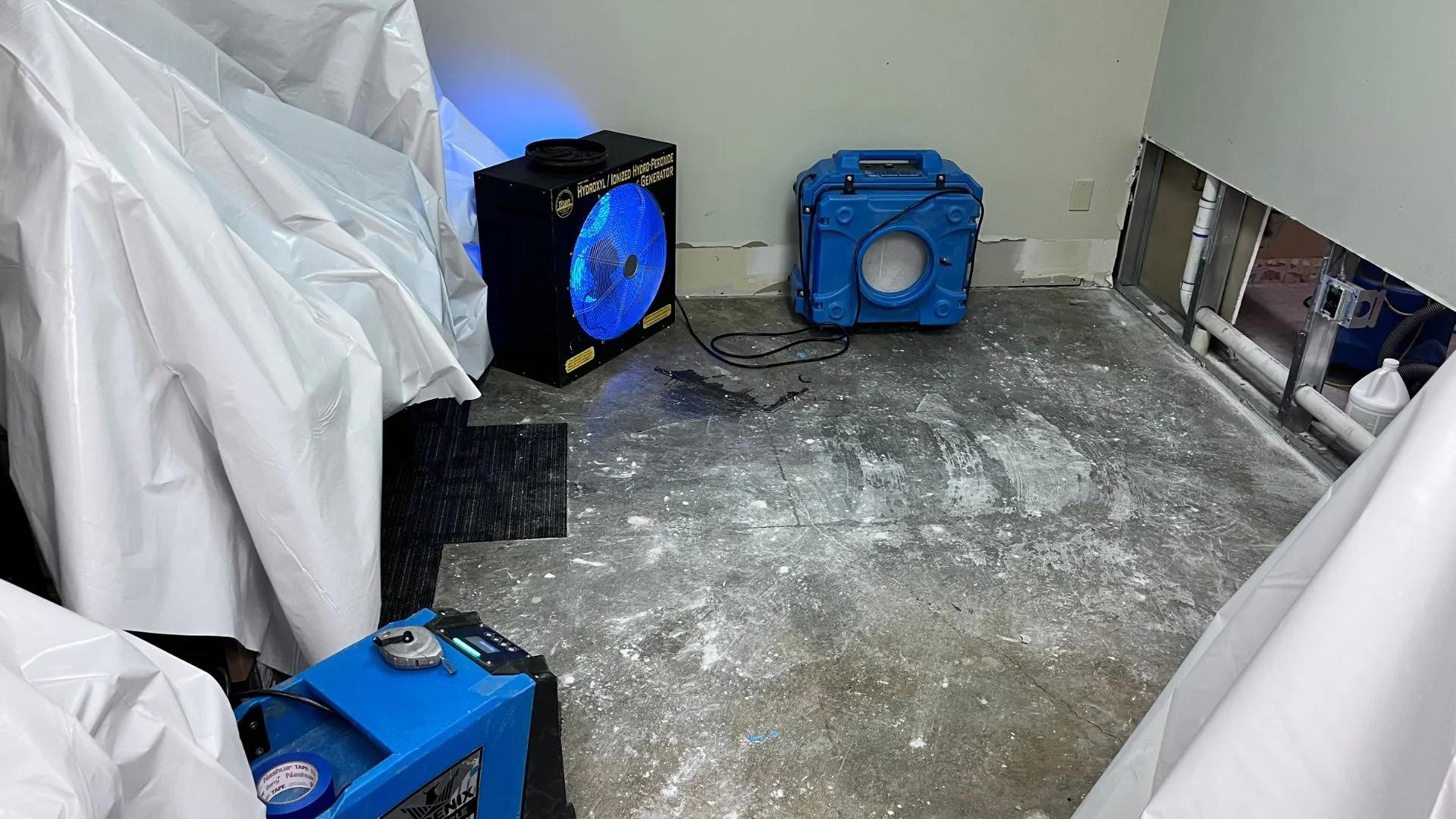Flood Damage Restoration FAQs: Your Most Common Questions Answered
Crucial Actions to Adhere To for Efficient Water Damages Remediation in your house
When encountered with water damages in your home, knowing the vital steps for reliable restoration can make all the distinction. You need to evaluate the damage and assurance safety and security prior to taking on the issue. Stopping the source of water is necessary, however it's simply the start. There's a collection of actions you must take to shield your residential property from further problems once you have actually handled that. Let's discover what you need to do next.
Analyze the Damages
The initial action is to examine the damage thoroughly when you uncover water damages in your home. Start by determining the resource of the water breach. Check for leaks, ruptured pipelines, or various other concerns triggering the issue. Next, take a look at the impacted areas for visible indicators of damages, including mold and mildew, staining, or bending development. Don't fail to remember to look in concealed areas like behind walls or under flooring, as water can leak right into these locations unnoticed.Document the damages by taking clear images and notes. When talking about the situation with your insurance policy copyright or reconstruction experts, this will assist you. Take notice of the type of products influenced, as different products call for different repair techniques. Lastly, assess the degree of the damage. Is it minor or substantial? Recognizing the scope will certainly lead you in determining whether to manage it yourself or call in the experts for a more comprehensive reconstruction procedure.

Guarantee Security
Prior to you begin any restoration job, ensuring your safety is essential. Examine the problem of your home. If the water's deep or if you discover electric threats, do not go into the location. Switch off the electrical energy and gas supply to avoid accidents. Wear protective gear like masks, boots, and gloves to protect on your own from contaminants or mold.It's important to remain aware of your environments; watch for unsafe surface areas and sharp things. Treat it as hazardous waste if the water is from a sewer backup. Maintain youngsters and family pets far from influenced areas to avoid exposure.Once you have actually taken these precautions, you can continue with the repair procedure. Bear in mind, your security comes first, and if you're ever unclear, it's best to speak with an expert. Taking these actions will aid guarantee you're all set to deal with the repair securely and efficiently.
Quit the Resource of Water
After ensuring your security, the following action is to stop the resource of water. Identify where the leakage is originating from. It can be a ruptured pipeline, a malfunctioning device, or even hefty rain entering via a harmed roofing. If it's a pipes problem, transform off the primary supply of water to your home to stop more flooding. For appliances, disconnect them and shut off their water supply valves.If the resource is outside, like rainwater, try to divert it far from your home utilizing sandbags or various other obstacles. For small leakages, you may be able to make use of tape or a sealer briefly till a professional can fix it. Bear in mind, attending to the source quickly is important to decreasing damages and stopping mold development. When you have actually stopped the water, you'll remain in a much better setting to go on to the next steps in the remediation process.

Remove Excess Water
Act quickly to remove excess water, as standing water can lead to a lot more substantial damages and mold growth. Gather your devices: a wet/dry vacuum cleaner, pails, and towels. You can utilize towels to saturate up the moisture if the water is superficial. For much deeper water, a wet/dry vacuum is your finest wager. Make sure to empty the vacuum regularly to prevent overflow.If the water is infected, like from a sewer backup, use protective equipment, including masks and handwear covers, to keep on your own secure. When you have actually gotten rid of as much water as possible, look for covert pockets of wetness in corners and under furnishings, as these can harbor mold.Don' t forget to shut off electric home appliances and power outlets in wet areas to avoid dangers. This preliminary action is crucial in minimizing damages and establishing the stage for an effective reconstruction procedure.
Dry and Dehumidify the Location
It's vital to completely dry and dehumidify the area thoroughly when you've removed the excess water. Beginning by utilizing dehumidifiers efficiently to draw dampness out of the air and stop mold and mildew growth. Watch on humidity degrees to guarantee the room dries completely.
Eliminate Standing Water
To efficiently take on water damages, you need to concentrate on removing standing water as swiftly as possible. Beginning by gathering required tools, like a wet/dry vacuum or a pump, depending upon the volume of water. If the water is shallow, a vacuum should work. For larger amounts, a pump is more efficient. While working, make certain to put on protective gear to maintain yourself risk-free from impurities. As you remove the water, focus on concealed areas like under furnishings or in corners where water might collect. When you have actually eliminated the bulk, your area will certainly begin to dry. This step is necessary, as sticking around water can result in mold and mildew growth and a lot more substantial damage.
Usage Dehumidifiers Efficiently
Exactly how can you efficiently make use of dehumidifiers to dry and dehumidify your space? Begin by placing your dehumidifier in the most afflicted area, preferably where water damages is most serious. Make certain to close all doors and windows to develop a closed atmosphere. Transform on the dehumidifier and set it to the ideal moisture level, usually around 30-50%. Empty the water collection storage tank frequently, or take into consideration using a design with a constant water drainage choice for convenience. When possible, use fans to enhance airflow, helping the dehumidifier job more successfully. Maintain the dehumidifier running till you're certain that the area is extensively dried, protecting against mold and mildew growth and extra damage (Smoke Damage Restoration). This step is important for efficient water damages remediation
Monitor Moisture Levels
Tracking humidity degrees is vital throughout the drying out process, as it helps assure your space continues to be without excess moisture. Purchase a reputable hygrometer to track humidity properly. Preferably, you want to keep degrees in between 30% and 50%. If humidity analyses climb above this variety, you might require to change your fans or dehumidifiers to enhance airflow. Inspect the readings regularly, specifically in areas vulnerable to wetness, like washrooms or basements. Think about enhancing air flow or making use of additional dehumidifiers if you discover relentless high moisture. Remaining on top of these levels not just quickens the drying procedure yet likewise protects against mold growth, ensuring your home keeps comfy and risk-free.
Clean and Disinfect Affected Surfaces

Bring back and Fix Your Home
After cleaning and disinfecting the influenced locations, it's time to restore and repair your home. Begin by examining the damage. Check for architectural problems, like compromised wall surfaces or floors, and attend to any essential repairs. Changing harmed drywall or flooring is crucial for both visual appeals and safety.If your furnishings or personal belongings were influenced, think about whether they can be restored or need replacement. Clean or expertly recover things where possible.Next, repaint walls and touch up any locations that require attention. This not only enhances look yet also protects surface areas from future water damage.Don' t fail to remember to examine your pipes and appliances for leaks, ensuring everything's operating appropriately. Take into consideration mounting a dehumidifier to protect against future dampness problems. By taking these steps, you'll recover your home to its previous glory and produce a safer living atmosphere.
Often Asked Inquiries
For How Long Does Water Damage Reconstruction Commonly Take?
Water damage remediation typically takes anywhere from a few days to numerous weeks, relying on the level of the damages (Water Damage Restoration St George UT). You'll wish to analyze the situation rapidly to decrease more problems and assure correct remediation
Will My Insurance Policy Cover Water Damages Reconstruction Costs?
Your insurance could cover water damages repair expenses, yet it relies on your plan. Examine your protection information and contact your insurance representative to clarify what's consisted of and what you require to sue.
Can I Take Care Of Water Damage Remediation Myself?
You can take care of water damages reconstruction yourself, but it's essential to examine the scenario initially. You could desire to call experts if it's substantial. Constantly focus on safety and guarantee you have actually got the right devices.
What Are the Indications of Hidden Water Damages?
You might observe indications of hidden water damages like warped walls, mildewy smells, or discoloration. If your floors really feel mushy or you spot mold and mildew, it's time to examine additionally before the situation intensifies.
Just How Can I Protect Against Future Water Damages in My Home?
To stop future water damages in your house, you need to on a regular basis examine pipes, seal cracks, preserve rain gutters, and assurance proper water drainage. Mounting a sump pump and dampness barriers can likewise help keep your space dry. When you uncover water damage in your home, the very first step is to evaluate the damages completely. Act promptly to eliminate excess water, as standing water can lead to website more extensive damage and mold and mildew growth. To effectively take on water damage, you require to concentrate on removing standing water as swiftly as feasible. As you get rid of the water, pay focus to hidden locations like under furnishings or in corners where water may collect. Water damage reconstruction normally takes anywhere from a few days to a number of weeks, depending on the level of the damages.